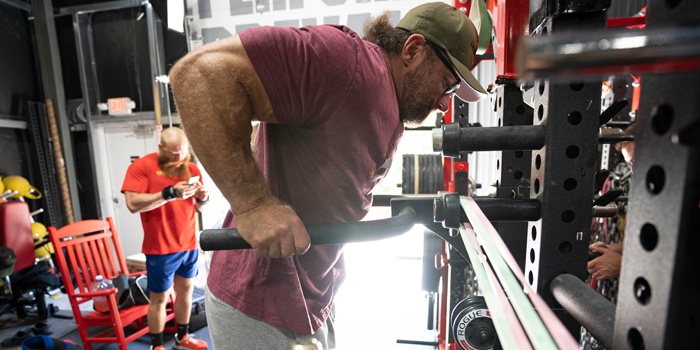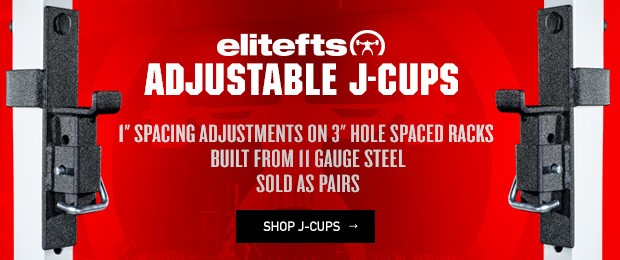
Pain is a fire alarm; it is our perception that a stimulus is harmful. Where there is smoke, there is usually fire. Either that or you suck at cooking.
Pain is crucial to our survival. We need a reason not to repeat what could cause us harm, exactly why there is a reason it hurts to touch a hot stovetop. Pain is your brain going, “Hey, let’s stop this before (more) damage occurs.” Pain is an alert to potential damage, but it does not always mean that any damage has been done.
If you pull a muscle, there will be some degree of acute tissue damage, and you will feel some pain. It is a basic survival mechanism—your brain doesn’t want more damage to occur. The more it hurts to use the pulled muscle, the less likely you are to stress it to the point of further damage. We need to understand that just because it hurts does not mean that you are causing more damage. It just means that the stovetop is hot.
MORE FROM SETH: Peaking Technically
The problem is that healing and the resolution of pain can occur at different rates. A bigger problem is that we can feel pain independent of tissue damage or the need for healing.
There is more to the perception of pain than tissue damage. Things can hurt without being broken. Your emotional state, sleep, experiences, beliefs, and fears all play a role in how you perceive pain. Even how we see an activity can have an impact on pain. Tell someone that deadlifts are going to hurt their back enough times, and they’re going to start believing that their back hurts because of deadlifts.
Tissue Damage Requires Healing
Pain Requires Re-Education
Both can occur simultaneously. Good rehabilitation should include both.
If something is broken, if something actually needs to heal, how do we positively influence healing? The first thing we need to do is stop damaging what is damaged without ceasing to use it all together. If you popped your pec, loading the bar up and ripping the sucker off isn’t going to help you. Doing nothing at all won’t help you either. There is a huge gap between absolute rest and doing so much that we make it worse. How well we play in that gap will influence how well we are able to heal.
A tissue’s ability to tolerate load reflects how well the tissue is adapted to load. If all we do is rest through healing, yes, the tissue can become structurally intact. While it might be intact, it will be adapted to the demands placed upon it. If all you ask of tissue is rest, it will be adapted to rest. When you start asking for more than rest it won’t feel great; it won’t perform great.
Why it won’t perform great is obvious—you haven’t done anything with it. Why it won’t feel great is less obvious—pain’s purpose is to warn us of potential harm. If all you’re used to is 0, 60 will feel fast, fast enough to cause some alarm.
What Do We Do About This?
We ride the edge of pain. We ask as much of the tissue as we can without exceeding a pain threshold. Where we set that threshold depends on who the person is, their pain tolerance, and the degree of damage (if any).
If we are playing under a two out of ten on the pain scale, the goal is to gradually increase what we can do without exceeding two. We gradually work to increase range of motion. We gradually work to increase the loading. We gradually build ability under the pain threshold. The goal is to build enough ability that you can do what you want to do without pain. The goal is to build enough ability that if tissues were previously damaged, they can handle the demands placed upon them.
Building ability through a painful area is doing more than causing adaptation at the tissue level. You are causing adaptations at the neural level in the brain. You are teaching yourself to trust your body. You are teaching yourself to trust movement. You are teaching yourself that what you are doing is safe and doesn’t have to hurt.
There is More to Pain
Pain isn’t purely mechanical. Pain isn’t entirely in our heads. Pain exists somewhere in between. Pain is an alarm, but we don’t always need to be afraid of it. Sometimes, we need a firehose while others only need to fan the smoke.
If we scale exposure to movement, if we build ability, if we build trust, then we can account for healing while acknowledging that there is more to pain than whether healing even needs to occur.
Seth Albersworth is a powerlifter with experience in and out of gear. His best totals are 2,000 pounds raw and 2,403 pounds multi-ply. Seth has completed his bachelor's degree in kinesiology from the University of Calgary and is currently studying to become a Doctor of Chiropractic at Palmer College of Chiropractic's Florida Campus.










